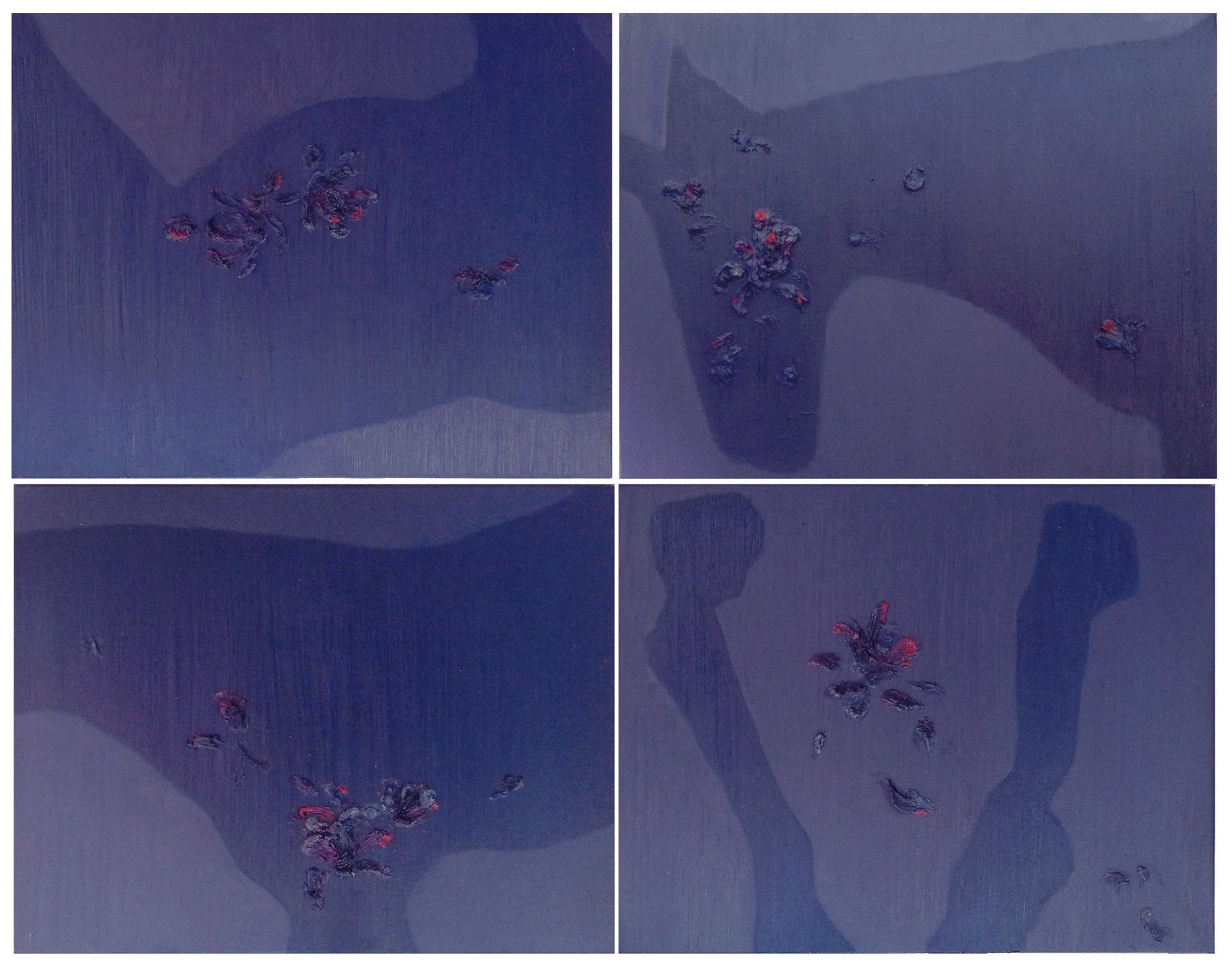2014 “心事” 杨桦专访 | Interview with Kristin Ng-Yang
1. 你这次在上海的个展“心事”最新系列作品的灵感来自于哪里?
我现在的创作,越来越多的不是用视觉的语言来叙述一个故事,更多的是表达心理的状态。确切的说是借花来表达我的心情,灵感是我某一刻的情绪。心里的感受,是我实实在在的追求。 所以,我在给我的画写题目的时候,尽可能的没有指向型。
Where does your inspiration come from for this solo exhibition“Diary in South Africa”?
My art creation tends to be more inspired by my inner feelings and by my mind rather than using a visual language. My inspiration comes from my instant emotions. In fact, I use flowers to convey my feelings and emotions. So when I give titles to my works, I try not to have directionality.

2. 你个人觉得这次的个展与去年在上海举行的“旅居南非“的首次个展有何不同?
我依然是沿着心情的感受在创作作品,是去年个展的延续和更深入的探索。
What’s the difference between this exhibitionand the one from last year?
This exhibition continues to explore the deeper side from my inner feeling after last year’s exhibition.

3. 这次的最新系列中描绘静物“花”的作品表现形式很独特,能告诉我们为什么会想到用这种特殊的方式来表现静物吗?
去年展览之后,“花”这个系列仍然是我今年一年的创作中心,我做了许多的尝试。首先,怎么能够把它们画的不是一组静物,做了大量的尝试。去掉花瓶;把花放在水里;放大花的尺寸,让它变的不是普通花儿的尺寸。 这些新的尝试,同样也让我遇到了新的问题,比如说,去掉花瓶后,它变成像一块花布上的图案,整个画面及其图案化。另一个尝试,把花的尺寸放大,花本身怎么画?怎么来填补这个空间?等等问题。 同时我也尝试过加入新的物体,比如马与花,花与鱼。
You painted these flowers in a very specialway, could you please tell us why?
After last year’s solo exhibition, I focus on the creation of flowers. I have tried many different approaches to paint the flowers. First of all, I want to break the traditional concept of still alive to depict the flowers. I did numerous tries, such as getting rid of the vase; floating the flowers in the water; enlarging the size of flowers. After these new experiments, I have to face the new problems. For instance, when I get rid of the vase, then the flowers seem like a pattern on the flowering cloth. If I enlarge the size of flowers, how can I paint these flowers? How can I make up for the spaces? Etc. I also tried to combine flowers with animals, such as flowers and horse or flowers with fish.

4. 你从央美毕业后移居南非已有十几年之久,能与我们大致分享一下南非的当代艺术的景象吗?你觉得南非的当代艺术对你的艺术创作有何直接或间接的影响。
南非与国内最大的不同,是艺术教育的不同。当国内的艺术圈里还在争论当代艺术该存在还是消失的时候,在南非,这已经不再是个问题。
南非有国际顶级的艺术家,南非当地得艺术创作非常活跃。这里很多艺术家,能够吸收他们南非本土文化,转换与重构,创作出自己的作品。
我在中国接受绘画的基础,在南非的教育,让我学会了怎样思考,怎样创作。
After you graduated from Central Academy of Fine Arts in China, you have been living in South Africa over 14 years. Could please tell us about the contemporary scene in South Africa? What sort of direct or indirect influences does it bring to your art creation?
The biggest difference between South Africa and China in terms of art is the education in art. When we are still debating contemporary art should to be or not to be in China, it is already not an issue in South Africa.
South Africa got the top worldwide famous artists. Art scene is very dynamic in South Africa. There are many artists absorb the local culture from South Africa, then they restructure and transform it for their art creation.
I received the education of painting skills from China and I have learnt how to think and how to create my art under the art education in South Africa.

5. 能与我们谈谈你这次展览中首次展出的最新装置系列“飞鸟和鱼”的创作过程吗?它想表达一些什么?
我做过一件装置作品《 六十四个抛之脑后的盒子 》,促使我继续在这个方向上探索。飞鸟和鱼的灵感来自九十年代末齐豫的一首歌《 飞鸟和鱼 》, 女人多愁善感,总为情所困,人生无常与无奈的悲凉!
我之前画过许多鱼和鱼的影子,也画过笼中的鸟。 也一直想继续往前走。我总体上是想让水中无奈的鱼儿们飞出水面,变成空中的一只飞鸟。
Could you please tell us more about your latest installation of “Flying bird and fish”? They look amazing!
I did one installation of“ 64 boxes behind the head”, it drives me to continue to explore towards this direction. The inspiration of “Flying bird and fish” comes from the song of “Flying bird and fish” by a famous Taiwanese singer, Qi Yu. This song expresses the sensibility of women, always being sensitive towards love and being confused towards love too. Life is so uncertain and dramatic!
I painted many fish and shadows as well as birds inside the cage. I attempt to bring the fish out the water and make them fly as a bird in the air!

6. 你个人是如何看待中国的当代艺术的?与南非的当代艺术相比,两者有何不同?
我觉得中国近20年的当代艺术,由于政策的问题一直不是主流艺术,属于在野的状态。坚持的艺术家们,也大多用写实的技术,来画东西。寻找新的表现方法和新方法的人,按比例还是太少太少。
南非与中国相同的地方是:这两个国家目前都不是世界文化的中心,大家不约而同地都在看西方,美国和欧洲。
这两个国家不同的是: 由于殖民的原因,南非从历史和文化上看都更加西化。它是英语国家,信息交流非常快。 艺术教育已经是当代艺术体系。
中国的当代艺术还属于非官方的的东西,还有很多人在探讨它该不该有的问题,这也是影响中国当代艺术发展的绊脚石。
How do you see Chinese Contemporary Art Scene? With comparison to South Africa, what are the differences?
I personally think the development of Chinese contemporary art over the past 20 years has been always not the mainstream due to the policy. It’s quite similar that China and South Africa both are not the center of worldwide culture. They both look at occidental countries and learn from them.
The difference is that South Africa is an English speaking country due to the historic reason, so the international information exchange is faster than China in terms of language barrier. Their art education system is contemporary art education.
Chinese contemporary art still hasn’t belonged to the official system, many of us are still debating “to be or not to be”, it interrupts and slows down the evolution of Chinese Contemporary Art.

